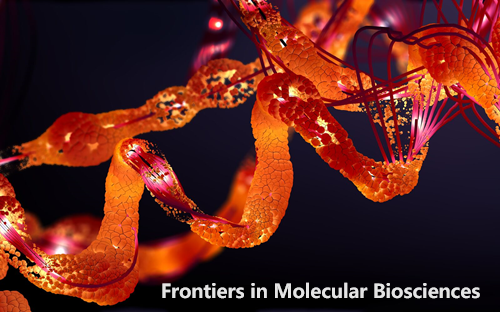Exploring metabolic anomalies in COVID-19 and post-COVID-19: a machine learning approach with explainable artificial intelligence
IF 3.9
3区 生物学
Q2 BIOCHEMISTRY & MOLECULAR BIOLOGY
引用次数: 0
Abstract
The COVID-19 pandemic, caused by SARS-CoV-2, has led to significant challenges worldwide, including diverse clinical outcomes and prolonged post-recovery symptoms known as Long COVID or Post-COVID-19 syndrome. Emerging evidence suggests a crucial role of metabolic reprogramming in the infection’s long-term consequences. This study employs a novel approach utilizing machine learning (ML) and explainable artificial intelligence (XAI) to analyze metabolic alterations in COVID-19 and Post-COVID-19 patients. Samples were taken from a cohort of 142 COVID-19, 48 Post-COVID-19, and 38 control patients, comprising 111 identified metabolites. Traditional analysis methods, like PCA and PLS-DA, were compared with ML techniques, particularly eXtreme Gradient Boosting (XGBoost) enhanced by SHAP (SHapley Additive exPlanations) values for explainability. XGBoost, combined with SHAP, outperformed traditional methods, demonstrating superior predictive performance and providing new insights into the metabolic basis of the disease’s progression and aftermath. The analysis revealed metabolomic subgroups within the COVID-19 and Post-COVID-19 conditions, suggesting heterogeneous metabolic responses to the infection and its long-term impacts. Key metabolic signatures in Post-COVID-19 include taurine, glutamine, alpha-Ketoglutaric acid, and LysoPC a C16:0. This study highlights the potential of integrating ML and XAI for a fine-grained description in metabolomics research, offering a more detailed understanding of metabolic anomalies in COVID-19 and Post-COVID-19 conditions.探索 COVID-19 和后 COVID-19 的代谢异常:采用可解释人工智能的机器学习方法
由 SARS-CoV-2 引起的 COVID-19 大流行给全世界带来了重大挑战,包括不同的临床结果和被称为长 COVID 或后 COVID-19 综合征的长期康复后症状。新的证据表明,代谢重编程在感染的长期后果中起着至关重要的作用。本研究采用了一种新方法,利用机器学习(ML)和可解释人工智能(XAI)分析 COVID-19 和后 COVID-19 患者的代谢变化。样本取自 142 名 COVID-19 患者、48 名后 COVID-19 患者和 38 名对照组患者,包括 111 个已识别的代谢物。传统的分析方法(如 PCA 和 PLS-DA)与 ML 技术进行了比较,特别是通过 SHAP(SHapley Additive exPlanations)值增强可解释性的 eXtreme Gradient Boosting (XGBoost)。结合 SHAP 的 XGBoost 优于传统方法,显示出卓越的预测性能,并为了解疾病进展和后遗症的代谢基础提供了新的视角。该分析揭示了 COVID-19 和后 COVID-19 条件下的代谢组亚群,表明了对感染及其长期影响的异质性代谢反应。后 COVID-19 的关键代谢特征包括牛磺酸、谷氨酰胺、α-酮戊二酸和 LysoPC a C16:0。这项研究凸显了在代谢组学研究中整合 ML 和 XAI 进行精细描述的潜力,从而更详细地了解 COVID-19 和 Post-COVID-19 条件下的代谢异常。
本文章由计算机程序翻译,如有差异,请以英文原文为准。
求助全文
约1分钟内获得全文
求助全文
来源期刊

Frontiers in Molecular Biosciences
Biochemistry, Genetics and Molecular Biology-Biochemistry
CiteScore
7.20
自引率
4.00%
发文量
1361
审稿时长
14 weeks
期刊介绍:
Much of contemporary investigation in the life sciences is devoted to the molecular-scale understanding of the relationships between genes and the environment — in particular, dynamic alterations in the levels, modifications, and interactions of cellular effectors, including proteins. Frontiers in Molecular Biosciences offers an international publication platform for basic as well as applied research; we encourage contributions spanning both established and emerging areas of biology. To this end, the journal draws from empirical disciplines such as structural biology, enzymology, biochemistry, and biophysics, capitalizing as well on the technological advancements that have enabled metabolomics and proteomics measurements in massively parallel throughput, and the development of robust and innovative computational biology strategies. We also recognize influences from medicine and technology, welcoming studies in molecular genetics, molecular diagnostics and therapeutics, and nanotechnology.
Our ultimate objective is the comprehensive illustration of the molecular mechanisms regulating proteins, nucleic acids, carbohydrates, lipids, and small metabolites in organisms across all branches of life.
In addition to interesting new findings, techniques, and applications, Frontiers in Molecular Biosciences will consider new testable hypotheses to inspire different perspectives and stimulate scientific dialogue. The integration of in silico, in vitro, and in vivo approaches will benefit endeavors across all domains of the life sciences.
 求助内容:
求助内容: 应助结果提醒方式:
应助结果提醒方式:


